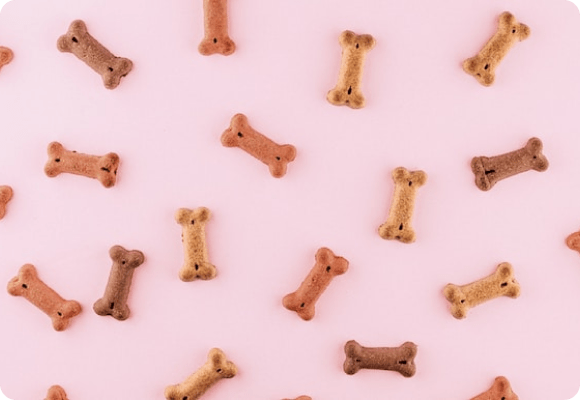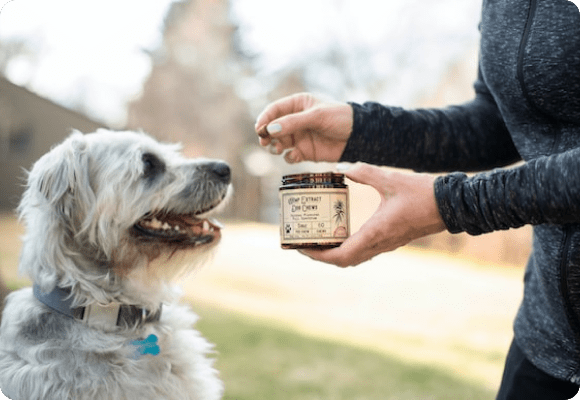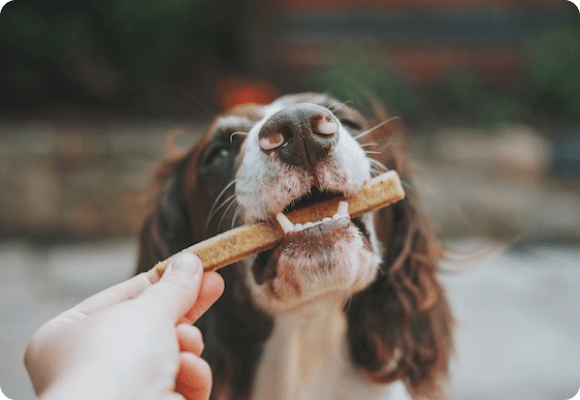Alaskan Klee Kai Dog Breed Facts: History, Health Traits, and Characteristics

Table of Contents
Alaskan Klee Kai Breed Card
Alaskan Klee Kai Breed Overview
Group
Non-sporting
Height
12-17 inches tall
Breed Recognition
Yes
Weight
6-25 pounds
Country of Origin
United States
Personality
Loyal, Intelligent, Vigilant
Lifespan
13-16 years
Shedding
Moderate
Alaskan Klee Kai History
In the 1900s, Siberian Huskies were imported from Siberia to Alaska for use as working dogs, watchdogs, and hunting dogs. While the Siberian Husky was selectively bred to make larger dogs, like the Alaskan Malamute, it was also bred to make smaller companion dogs. This is where the story of the Alaskan Klee Kai dog breed begins.
In the early 1970s, Linda Spurlin began breeding her Alaskan Huskies smaller and with more desirable health and temperament traits. By 1988, she had successfully bred the first Alaskan Klee Kai, who met her strict standards for appearance and heartiness and was soon introduced to the rest of the world.
Since then, the Klee Kai has been an increasingly popular companion dog. The breed was recognized as a purebred dog by the United Kennel Club (UKC), an international dog registry, on January 1, 1997, and was accepted into the American Kennel Club’s Foundation Stock Services in October 2020.
Cost ✅
COST LEVEL
Low End: $1800
High End: $3000
Alaskan Klee Kai Physical Traits
General Appearance💡
The Alaskan Klee Kai is a small dog, only weighing around 25 lbs at its largest. It has a smooth and well-balanced gait and is slightly longer than it is tall. Despite the small size, the overall physical appearance gives an alert and energetic demeanor.
The most distinguishing characteristic of the Klee Kai is the symmetrical mask and coloring around its body, which can range from black to gray to red.
The Alaskan Klee Kai’s body is well proportioned with a level topline and an agile stride. The neck, chest, and body are well-muscular, and the ribs are sprung. The legs are elegant and angulated. The loosely curled tail resembles the tail of its husky lineage.
The Klee Kai has a wedge-shaped, round, and broad head with large and erected triangle ears and almond-like medium eyes. The muzzle tapers from the stop to the nose, and the jaws are strong.
The Alaskan Klee Kai has a dense double coat with a short undercoat and a longer overcoat of guard hairs. They most often come in black & white, gray & white, and red & white with a mask of color around the face.
Size & Weight ❤️
Height: 12-17 inches
Weight: 6-25 pounds
Height: 12-17 inches
Weight: 6-25 pounds
Coat & Color
Eye Color
Brown
Coat Color
Black & white, Gray & white, Red & white
Coat Length
Medium
Coat Texture
Straight
Alaskan Klee Kai Temperament and Personality
This little Husky look-a-like is an intelligent, high-activity dog with moderate energy levels. It is a great family dog, which means they can be quite suspicious of those they don’t know and are most likely to be found at the side of their owner.
The Klee Kai is not an excessive barker but may “talk back,” and they can occasionally be people-shy. They require a moderate amount of exercise and can become unhappy or bored if left alone.
They are known to be good escape artists thanks to their small size and high intelligence. This intellect, however, makes them great comedic dogs that love to play tricks on their owners and allows them to excel in dog sports, such as agility.
Kid Friendly?
GOOD WITH KIDS
Bad Idea
Excellent Nanny
Yes, the Alaskan Klee Kai is kid-friendly.
The Klee Kai is an intelligent and watchful dog that can sometimes have little patience. This makes them good around kids if they have been raised around them, but it will likely mean they will require supervision when around young children.
Good with Other Pets?
GOOD WITH PETS
Bad Idea
Friendly Socialite
Yes, the Alaskan Klee Kai is great with pets.
They were bred from Huskies, which are bred to work together in packs. This makes the Klee Kai a social dog that thrives in packs. However, early socialization is still important to instill healthy habits and proper manners around other dogs and pets.
Barks a Lot?
BARKING LEVEL
When Neccessary
Noise Maker
No, the Alaskan Klee Kai is not known to bark excessively.
They are, however, very alert little dogs and tend to notify their people of incoming dangers. This helps to make them good guard dogs.
Can Be Left Alone?
LEFT ALONE
Likes Being Alone
Sepration Anxiety
No, the Alaskan Klee Kai is not very happy when alone.
This breed attaches strongly to its owners and is very intelligent. This means they are prone to separation anxiety and boredom. Plus, they are notorious escape artists. All things considered, it is best not to leave an Alaskan Klee Kai alone.
Alaskan Klee Kai Training
Training the Alaskan Klee Kai will be easy. These dogs love to please their humans and have a high degree of cognitive function that allows them to quickly learn new things. They love being mentally and physically stimulated, so training will not only be relatively easy, but your dog will also be eager to train with you.
A gentle hand and tons of positive reinforcement will go a long way to aiding you in making your small husky dog a diligent and disciplined worker. They are great at accepting training in an array of fields, including but not limited to basic obedience, scent work, dock diving, and agility.
Basic obedience training will be necessary for controlling your new dog and giving them a job to learn. This versatile dog takes well to any form of training, but basic obedience is a must for every responsible dog owner. More specialized training is not needed but can be done to further enrich your dog’s life.
Alaskan Klee Kai Needs
The Klee Kai is a moderate energy, high activity dog, so they require regular exercise of moderate intensity, like brisk walking every day. They are also highly intelligent and prone to boredom and separation anxiety, both of which are made better by regular exercise.
These traits also mean the Klee Kai is most happy at your side and is likely to try to escape if it is not trained and used to being on its own.
Nutritional Requirements
FOOD MOTIVATED
Picky Eater
Voracious Eater
For nutrition, the Klee Kai does best on high-quality dog food. This can be commercially made food for small dogs or a homemade diet. Pay special attention to the formula of the dog food, as it should be specific to the dog’s age, weight, size, and activity level.
The Alaskan Klee Kai can easily gain weight and become obese, so carefully watch the calories they consume to avoid this.
Exercise & Activity Levels
ENERGY LEVEL
Couch Potato
Go-All-Day Stamina
The Klee Kai is a highly active yet moderate-energy dog. This means they can move all day at a moderate pace and do best with the daily habit of a brisk walk and some mentally stimulating toys, like puzzle toys or snuffle mats, to quell their energy and ease their boredom.
Grooming Needs
SHEDDING LEVEL
No Shedding
Shedding Machine
Grooming your Alaskan Klee Kai will be relatively easy but needs to be done regularly. Weekly bushings should be enough to keep the coat looking good, and it is repellent to dirt, so it does not require frequent baths.
Nail and fur trimming should be at regular intervals as well, and this dog is known to shed twice per year, so a de-shedding tool, like a FURminator, can be handy.
Alaskan Klee Kai Average Lifespan
The average lifespan of the Alaskan Klee Kai is 13-16 years. This is a generally healthy breed that is not too prone to injury that would alter its life expectancy.
Commom Health Problems
- Patellar Luxation: Patellar luxation is when the kneecap (patella) moves out of the femoral groove in which it is supposed to sit. Once this happens, the patella is then free to dislocate or slide.
- Autoimmune Thyroiditis: Often presenting itself at around 2-5 years of age, this disease is the most common cause of primary hypothyroidism in dogs and is not life-threatening, although it can lead to obesity, hair loss, and skin issues.
- Heart Murmur: An abnormal heart sound that is usually only heard with a stethoscope and caused by structural problems in the heart.
- Eye Disorders: From corneal ulcers to cataracts, small dogs are often susceptible to eye issues. Many of these problems can lead to blindness and recurring infection.
- Factor VII Deficiency: This is a mild to moderate blood clotting disorder of recessive inheritance that leads to the dog bleeding more than normal.
Recommended Health Tests
- Thyroid evaluation
- Factor VII DNA test
- Cardiac evaluation
- Patella evaluation
- Ophthalmologist evaluation
Tips for New Alaskan Klee Kai Owners
If looking into Alaskan Klee Kai, consider the following tips
Tip 1
Find a Reputable Breeder: A good breeder who knows what they are doing will have genetic tests done on their breeding stock to ensure the proper characteristics, build, temperament, and health are all being born into the next generation. They will also have documentation on each test and the dog’s lineage, so you know exactly what you are getting yourself into.
Tip 2
Get Puppy/Dog Products in Advance: Don’t wait until the day you bring your dog home to go shopping for the things you need. Dog ownership is a responsibility and should be prepared for as such. This process will help to make the lives of both you and your dog less stressful as they transition into their new home.
Tip 3
Train Early and Consistently: The Klee Kai is a highly intelligent dog that is prone to mischief and boredom. This behavior requires a gentle hand to curb, but it can be done as these dogs love to please their owners. Training them consistently over time will build their confidence and make them less likely to try to escape when you aren’t looking.
Tip 4
Prevent Escaping: Their intelligence also makes them great at problem-solving, so they are likely to try and succeed at escaping.
Alaskan Klee Kai Similar Breeds
– Japanese Spitz
– American Eskimo Dog
– Finnish Lapphund
– Keeshond
Alaskan Klee Kai Supplies You Need
You will need a crate for your Alaskan Klee Kai as well as high-quality dog food for small dogs. This will help to make your dog’s transition easier and give you a space to put your dog while you’re away.
Dog treats and toys are also a great idea to keep your dog from becoming bored by training them and providing them with toys to keep themselves entertained.
Since they are prone to issues like patellar luxation, a high-quality dog bed will also be a good choice. This will help to take pressure off of their joints while they sleep and keep their joints healthy longer. Joint supplements will help as well to keep their joints healthy.
For walks, a harness is preferred over a collar as harnesses are harder to slip out of than collars, which place all of the pressure of the walk on the dog’s throat.
Best Dog Beds for Alaskan Klee Kais


Best Dog Food for Alaskan Klee Kais

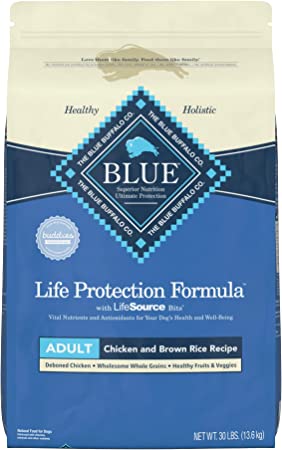
Best Dog Supplements for Alaskan Klee Kais
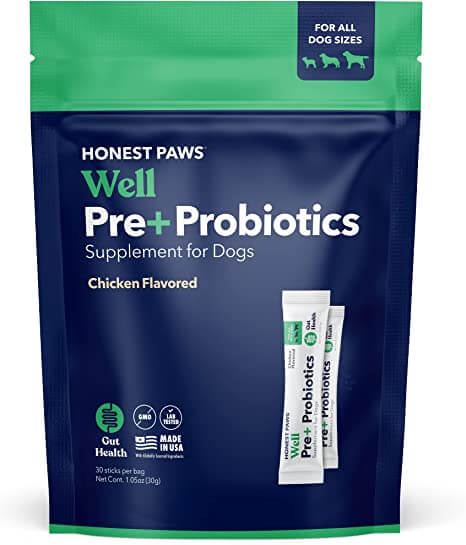

Alaskan Klee Kai Fun Facts
Here are some fun facts about the Alaskan Klee Kai dog breed:
Fun Fact 1
The word “Klee Kai” was formed from parts of other Alaskan Athabaskan words meaning “little dog.”
Fun Fact 2
The Klee Kai will sometimes “talk” in a series of strange and amusing howls, yodels, purses, and chirps as a way of communicating with their owners.
Fun Fact 3
The plural and singular forms of Alaskan Klee Kai are spelled and pronounced the same.
Fun Fact 4
The Klee Kai is a great escape artist thanks to its high intelligence and athleticism.
Why Trust Us?
This article was written by pet parents, for pet parents, and reviewed by our expert veterinary panel. We understand you want to ensure you are only using the best products to support your pet’s health and happiness. At onevet.ai our mission is to provide you with the most up-to-date information and resources you need on the products you buy for your pet.
Our specialized content team of writers, reviewers, and veterinarians analyzes all of the information for you and presents it in an easy-to-understand format. We independently research and test the best products so you can make an informed decision since your pet only deserves the best.


















